Unbelievably I knew immediately what it was. Have you ever heard of, or seen an Anax? Come and let me show you.

So, what is this "Anax" that I am talking about? The pictures below will reveal an amazing creature to you.
An anax is one of the biggest dragonfly nymphs of the Emperor species. Now I know that some are going to ask me what a nymph is? Not many of us have access to nature and this explanation is meant for you.
At first, dragonflies lay their eggs under the leaves of ponds, rivers and dams. Once the eggs hatch, small little nymphs emerge, and they start to grow in the water. Nymphs are reckoned to be the most ferocious hunters in the water, and they attack many other little creatures and even the nymphs of smaller dragonflies. Can you believe that some dragonflies stay as nymphs in the water for up to 7 years, before they emerge to become adult dragonflies.?
So here below is an Anax nymph that is now out of the water and busy transforming into a dragonfly. A process called Metamorphism.
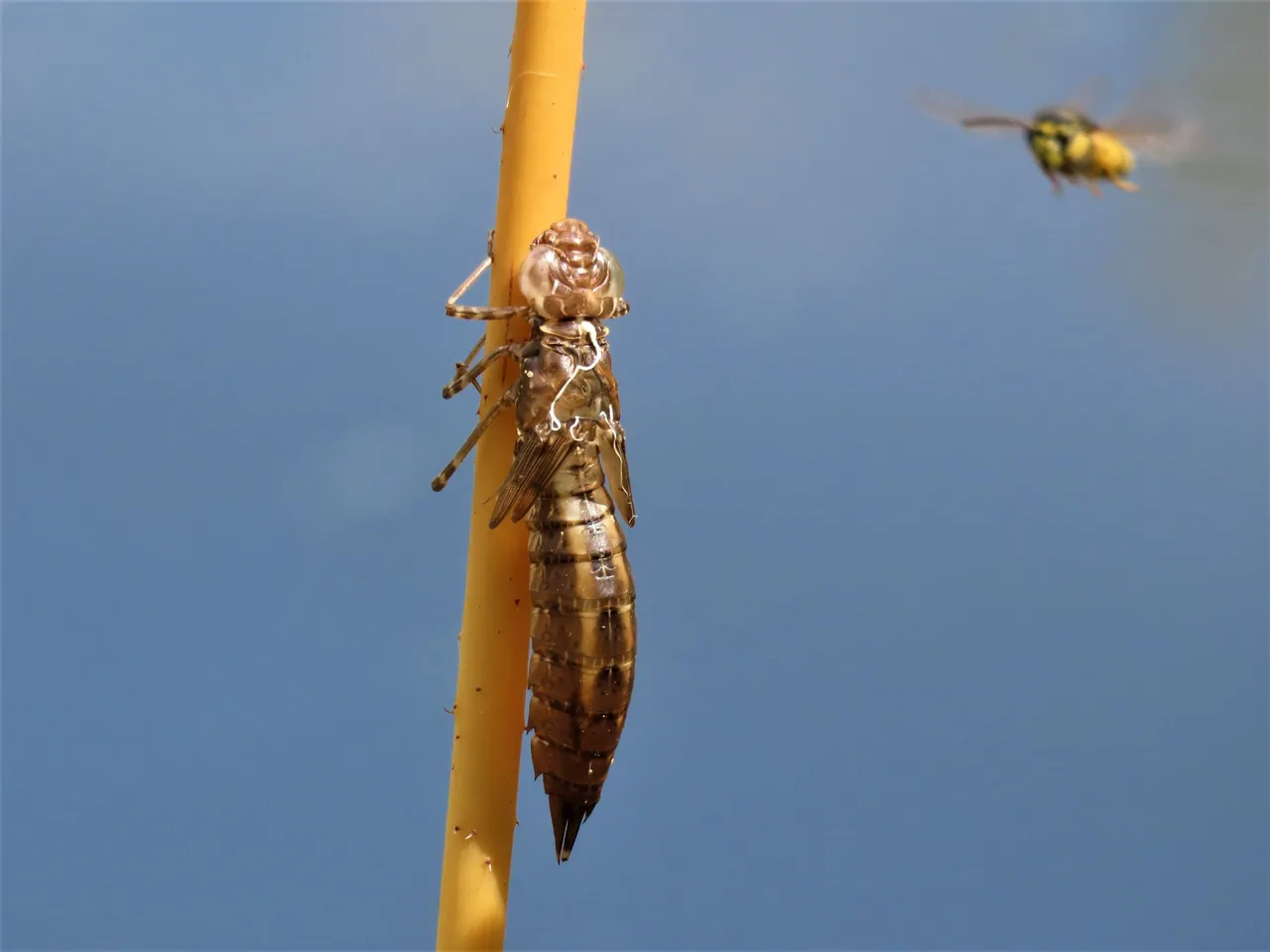
But where did I find the Anax nymph? Look in the center of the photo below, on the long flower stem.
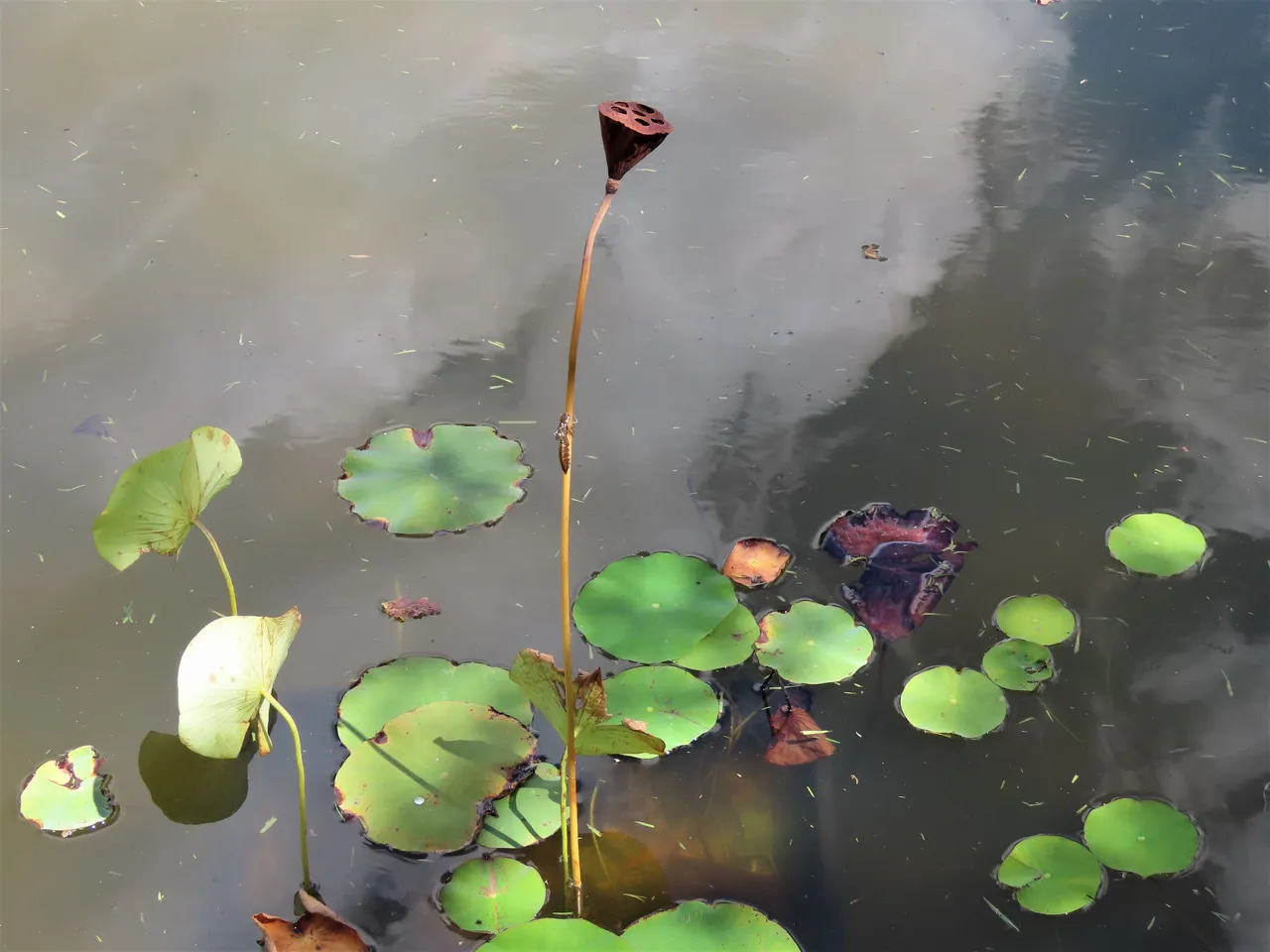
Life Expectancy.
The larval phase seems to be very variable. We have measured the time elapsing from laying to emergence as an adult dragonfly and found that the Blue Emporer took 83 days.
But Odonata also over winter in the larval phase and this can last months, even years in the case of recorded Blue Emperor larvae in Switzerland.
As a broad generalization, smaller damselfly species probably survive as flying adults for a month or less, medium sized dragonflies, such as the Red-veined Dropwing live as adults for 1-2 months, and the large, robust dragonfly species may survive a whole summer season
Source: Book. Dragonflies and Damselflies of South Africa. ISBN 978-1-77584-184-5
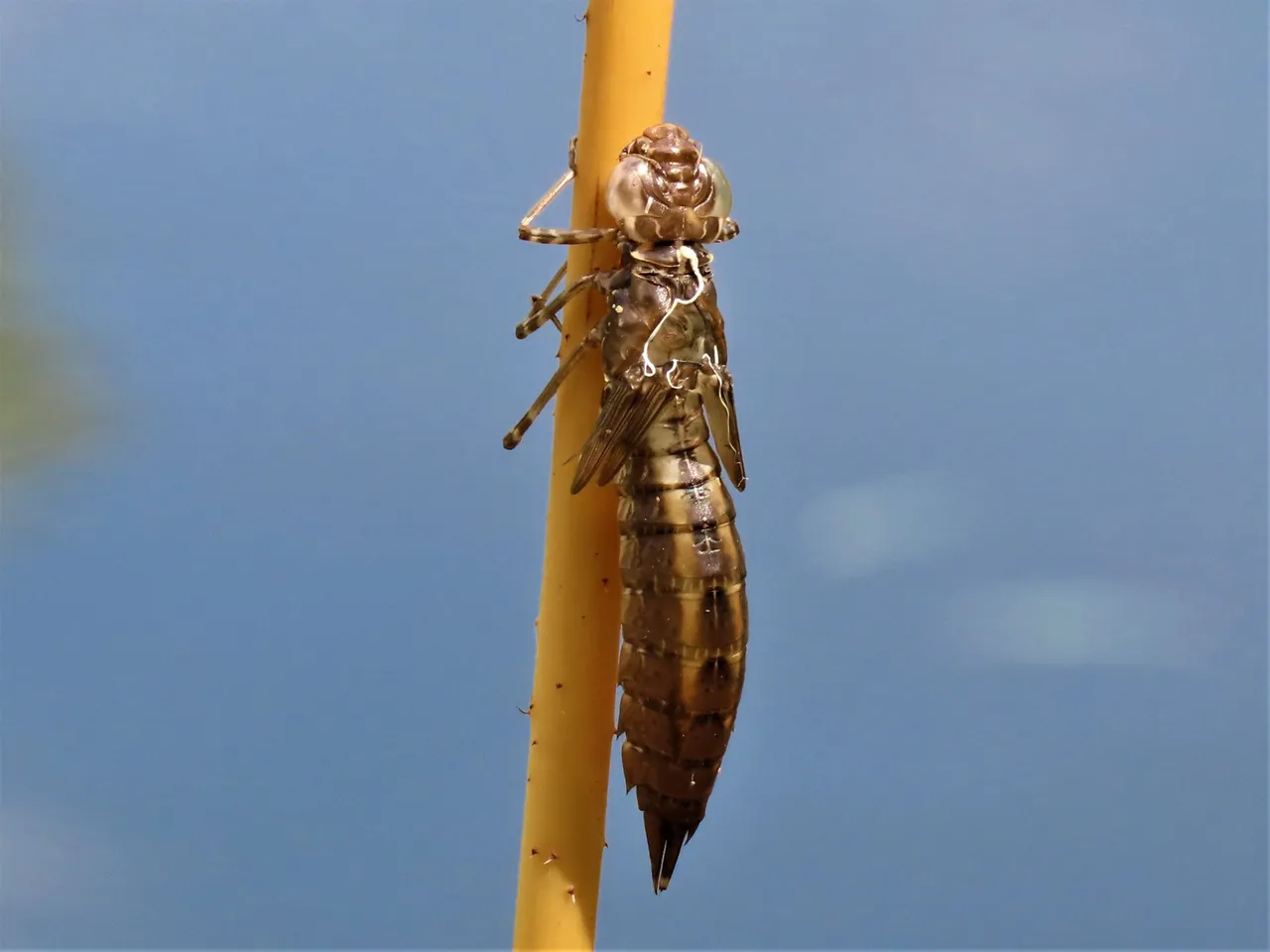
Yes, it was alive and moving around the stem.
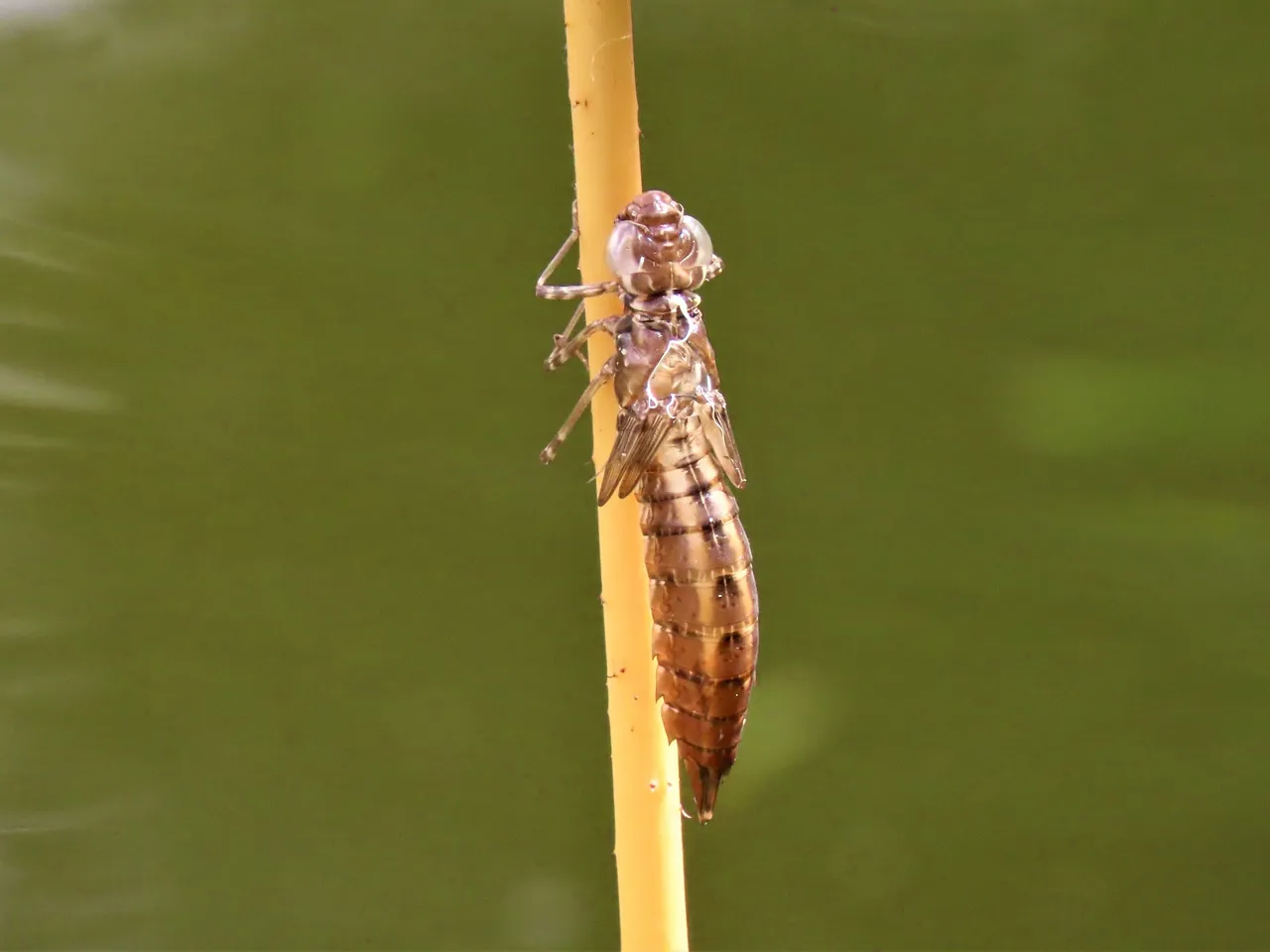
Whenever I visit a pond, I have the habit to inspect everything in and on the water. Every leaf, or plant gets a patient scrutinizing and quite often I find some surprises.
Such as this snail floating on an old leaf in the pond.
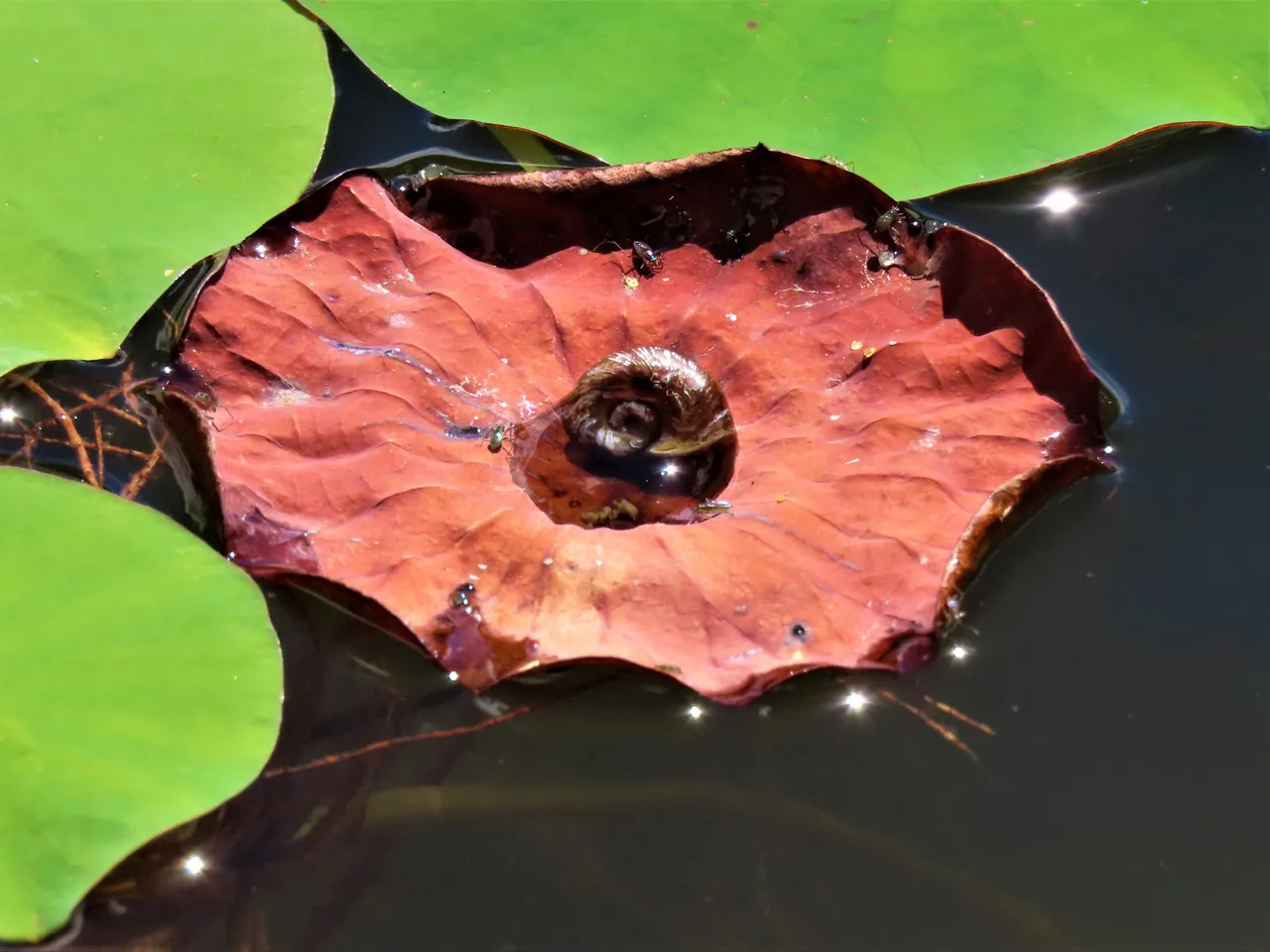
Some detail here of the start of the emperor's wings.
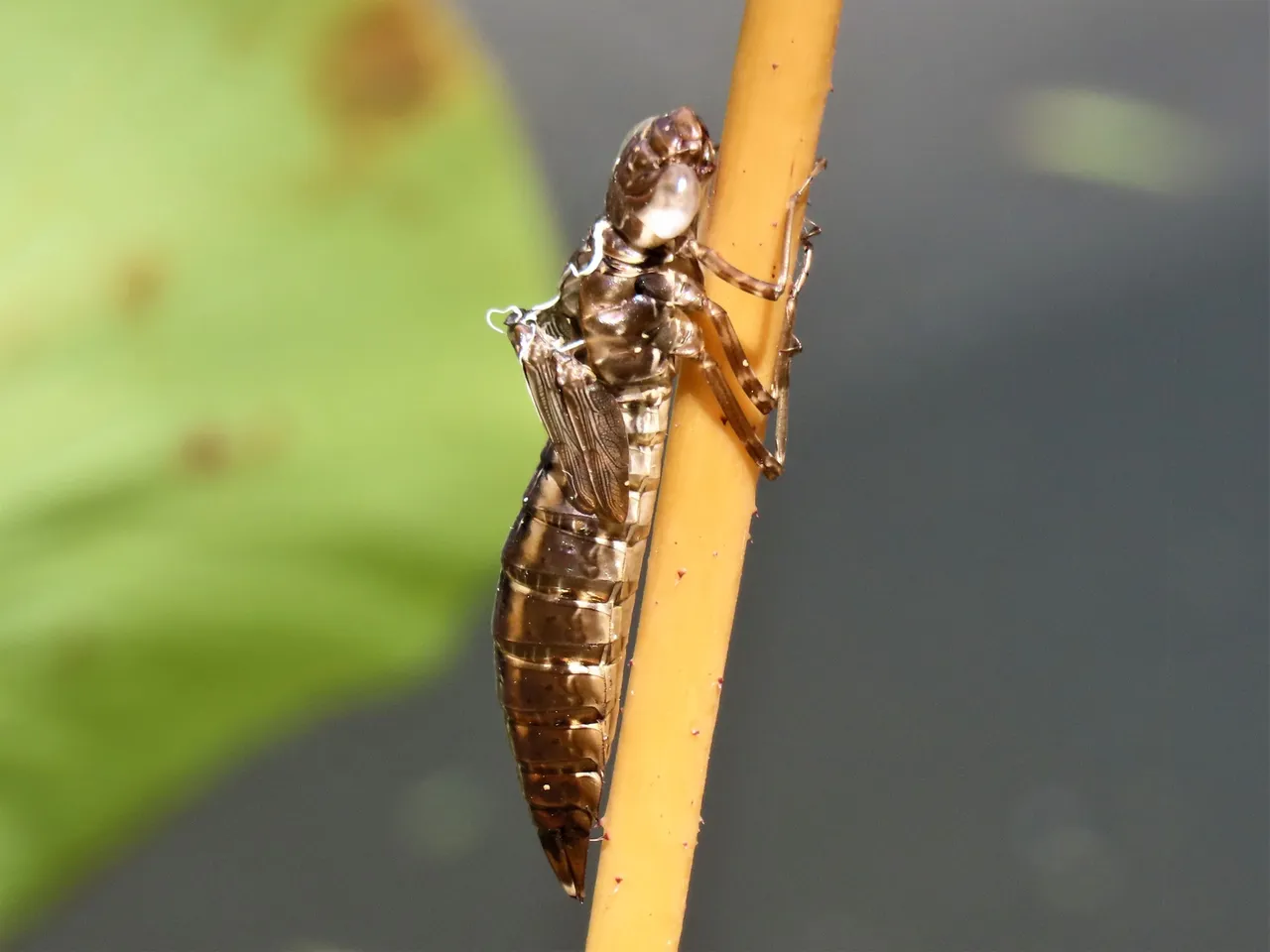
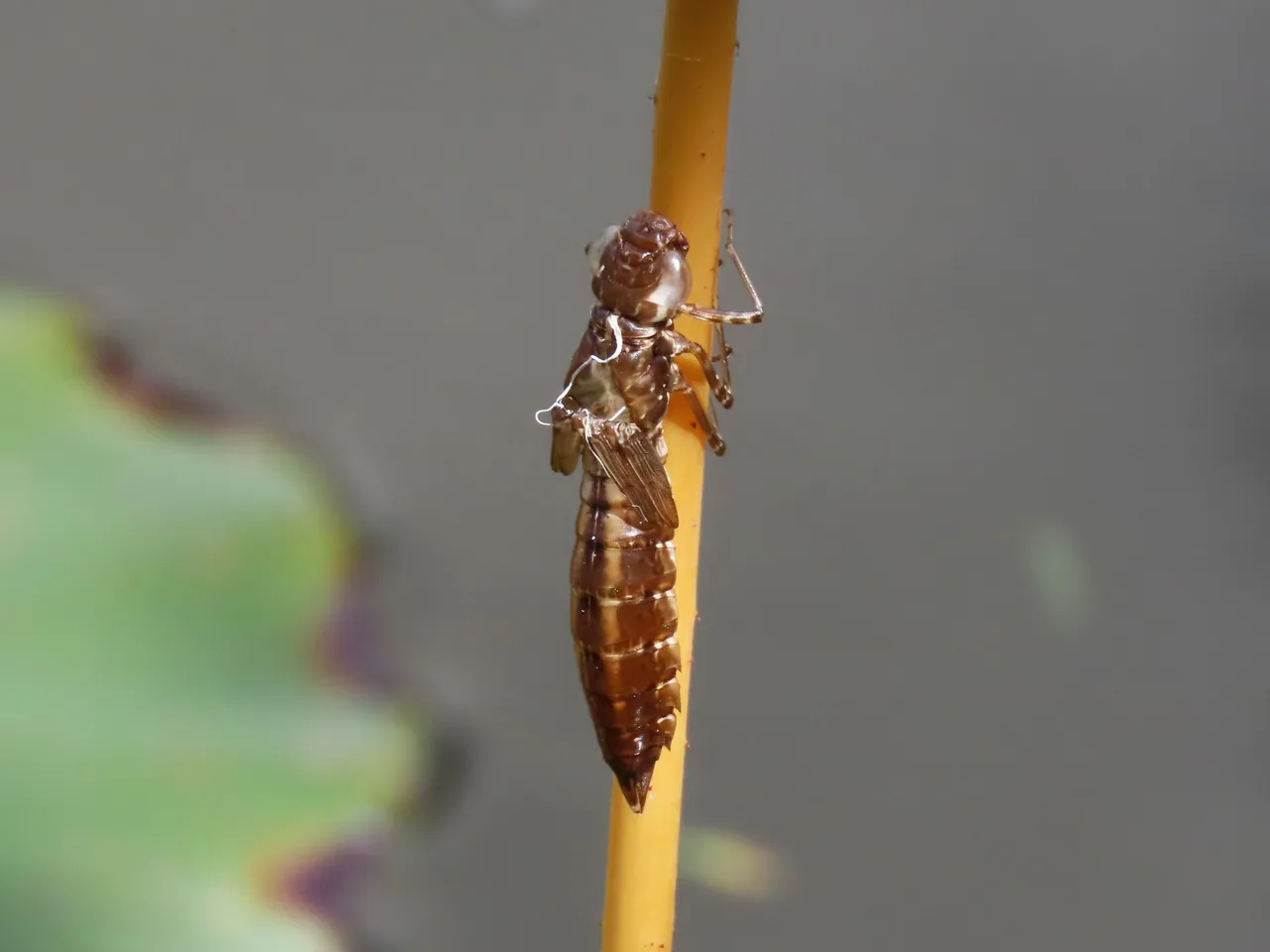
And finally, here is the Blue Emperor in its full glory (Anax imperator)
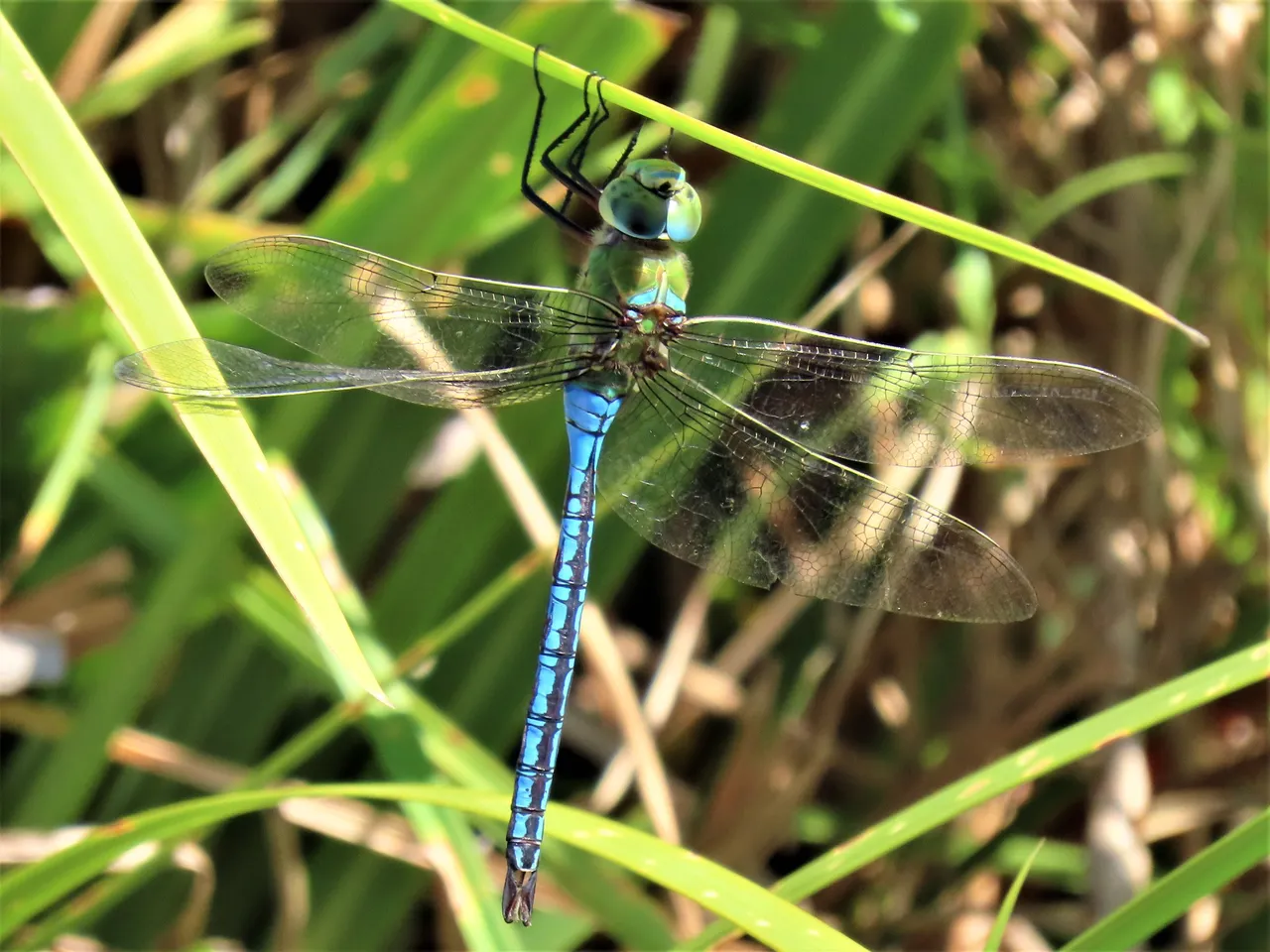
This is why I like the Blue Emperor so much, as Wiki tells me that they are the rulers of all the dragonflies in the sky.
The emperor dragonfly or blue emperor(Anax imperator) is a large species of hawker dragonfly of the family Aeshnidae, averaging 78 millimetres (3.1 in) in length. The generic name Anax is from the ancient Greek ἄναξ, "lord"; the specific epithet imperator is the Latin for "emperor", from imperare, to command.
They frequently fly high up into the sky in search of prey, which includes butterflies, other Odonata and tadpoles; small prey is eaten while flying. They breed in a variety of aquatic habitats from large ponds to dikes, but they require a plentiful supply of vegetation in the water. The females lay the eggs into plants such as pondweed, and always lay alone. The larvae are very aggressive and are likely to influence the native species composition of colonized freshwater ecosystems.
Source
So I hope that you have enjoyed my discovery and the photos.
Late Edit: The next day. It was raining until the early morning hours, with a very strong wind. So, a bit later we went out, as I wanted to see the progression of the new dragonfly.
But look! The head of the flower was gone and so was the dragonfly nymph.
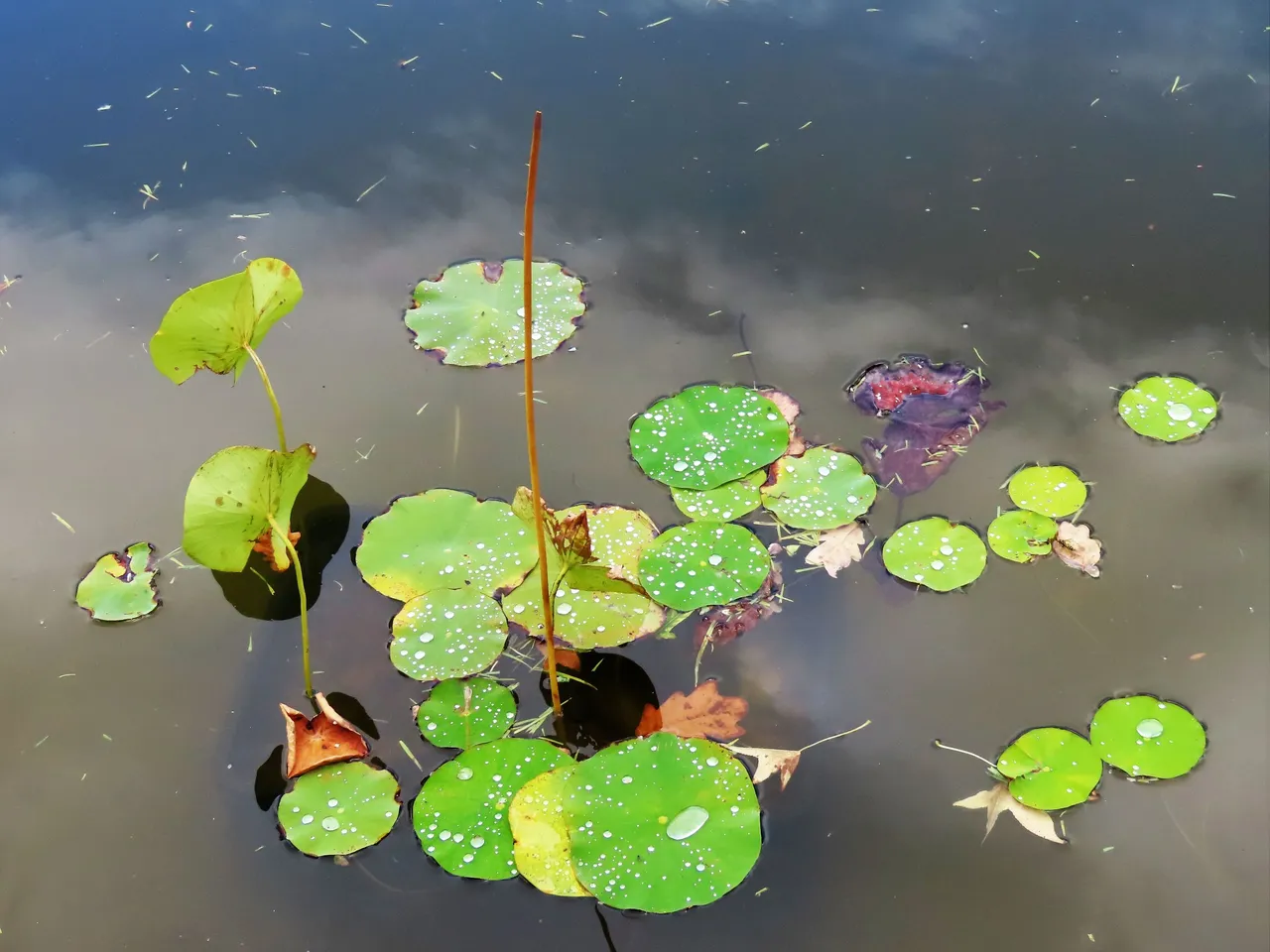
After a careful search, we found the head of the flower, but no sign of the nymph.
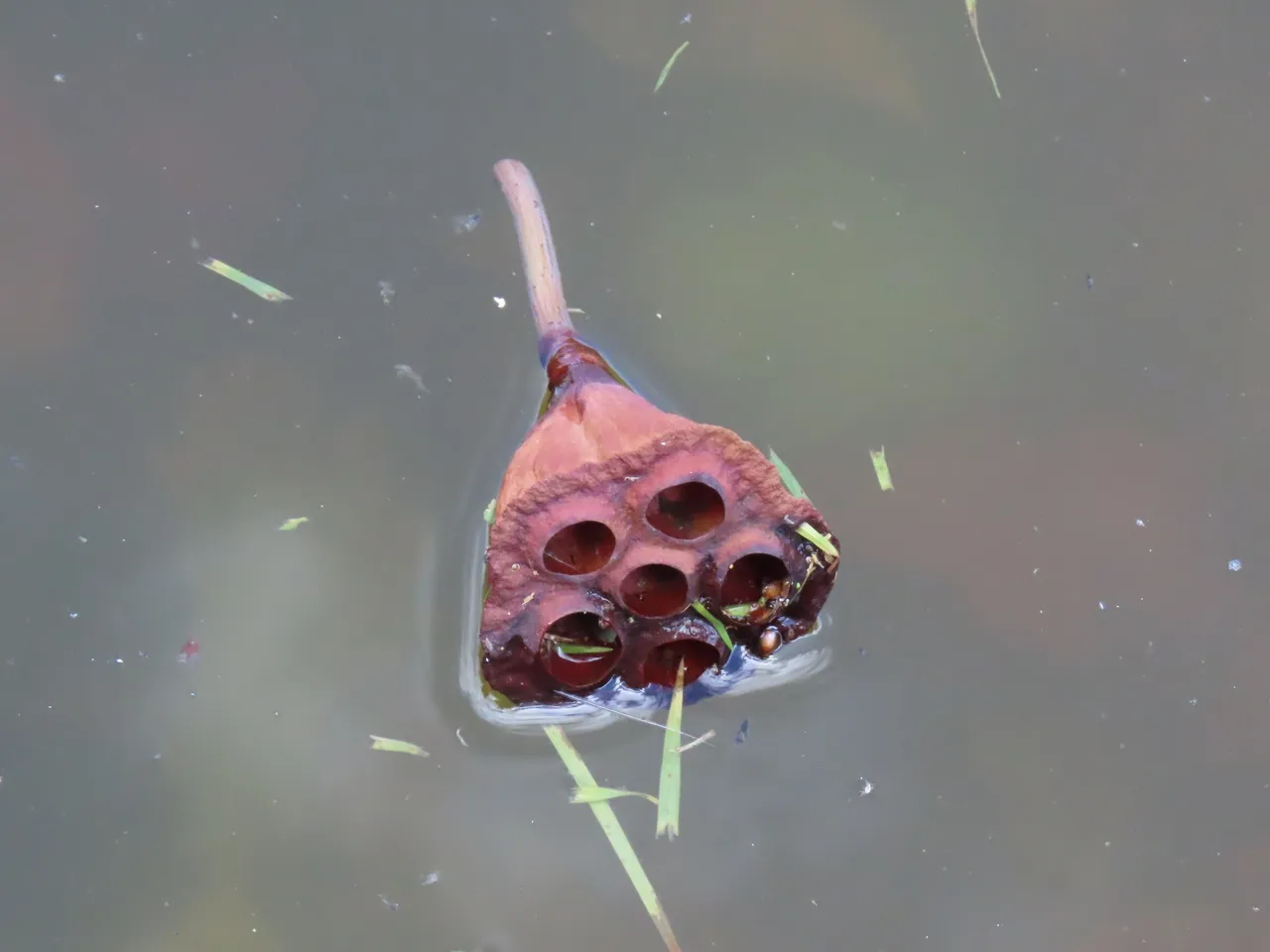
We can only hope that the dragonfly transformed from the nymph stage and that it survived.
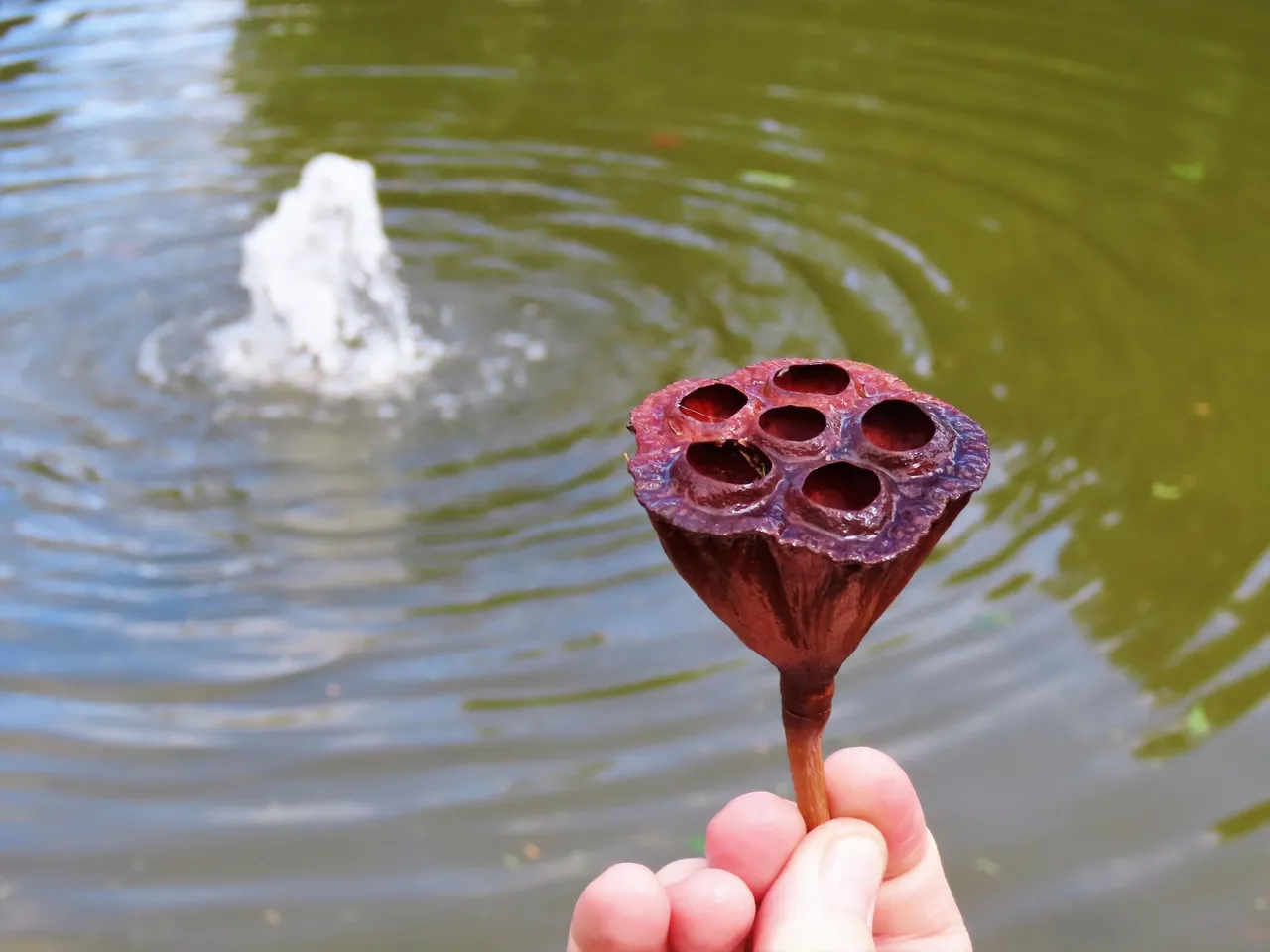
Note: No need to scan this for AI, as it will never be used in any of my posts. I like to do things the "old fashioned" hard way, by doing my own research.
And That's All Friends.
Photos by Zac Smith-All Rights Reserved.
Camera: Canon Powershot SX70HS Bridge camera.
Thank you kindly for supporting a post on behalf of @papilloncharity